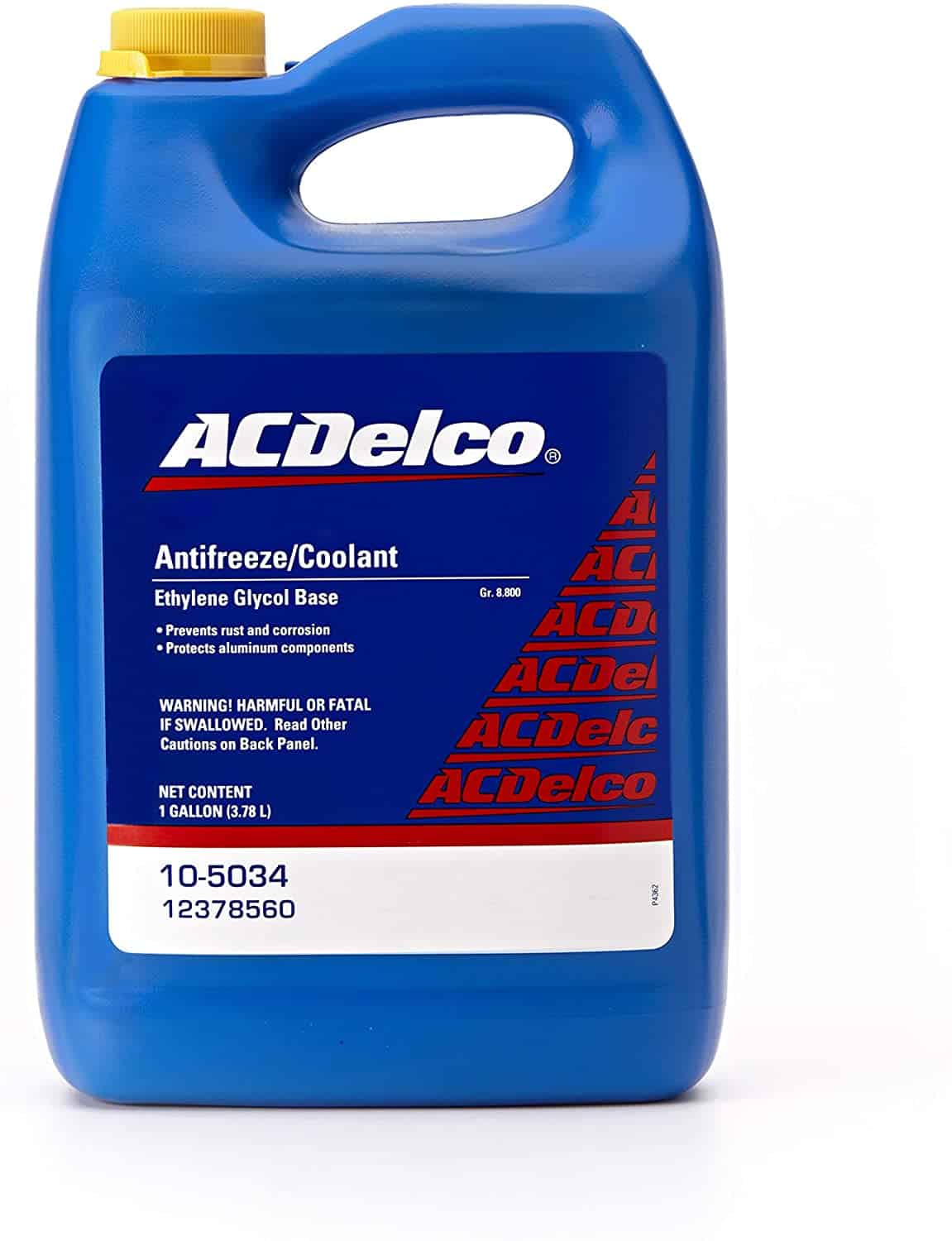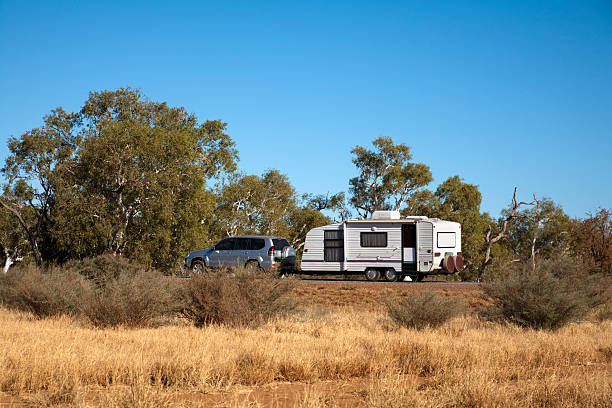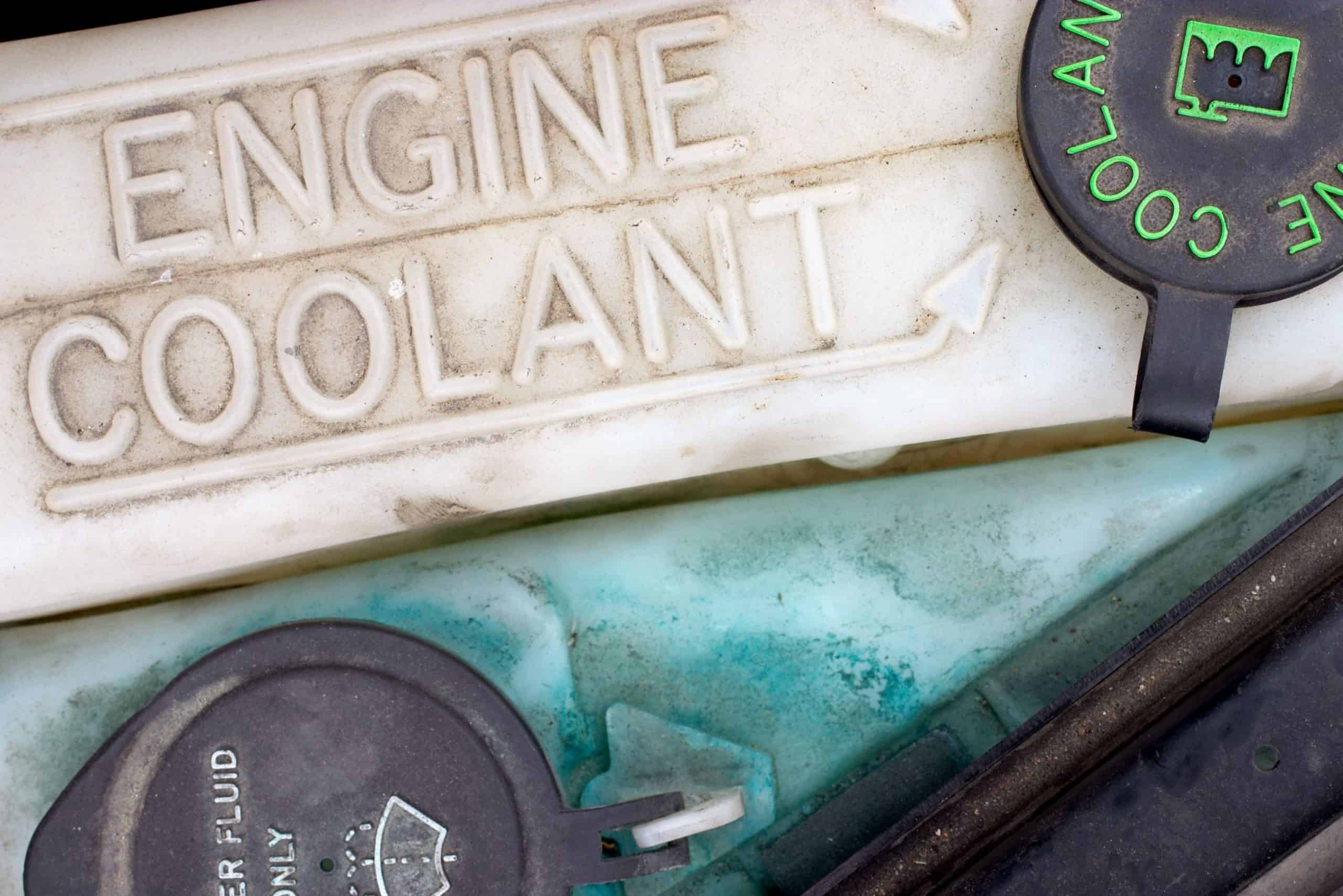
Whether you’re getting ready to leave for a long road trip or are just making your daily commute to the office, your car needs coolant to get you there. While people always talk about getting your oil changed, you never hear about coolant changes.
But does that mean you shouldn’t get it changed? And what do you do if your coolant is low? The truth is – your coolant does need to be changed periodically. Furthermore, changing it with the right coolant and the right way is essential, or you’ll end up doing more harm than good.
What Kinds of Coolant Are There?
There are three different kinds of coolant that are widely available. These coolants are as follows: Inorganic Additive Technology (IAT), Organic Acid Technology (OAT), and Hybrid Organic Acid Technology (HOAT).
From a driver’s standpoint, the only thing that really matters when looking at those names is the service intervals typically associated with them. IAT antifreeze is typically in older cars and needs to be changed the most often – typically between 24,000 and 40,000 miles.
OAT and HOAT antifreeze have much longer service intervals, and typically can last up to 100,000 miles. However, the service intervals recommended by the manufacturer are often shorter. Be sure to meet whatever service intervals the vehicle manufacturer recommends, or you risk voiding your warranty.
What Coolant Should I Buy?
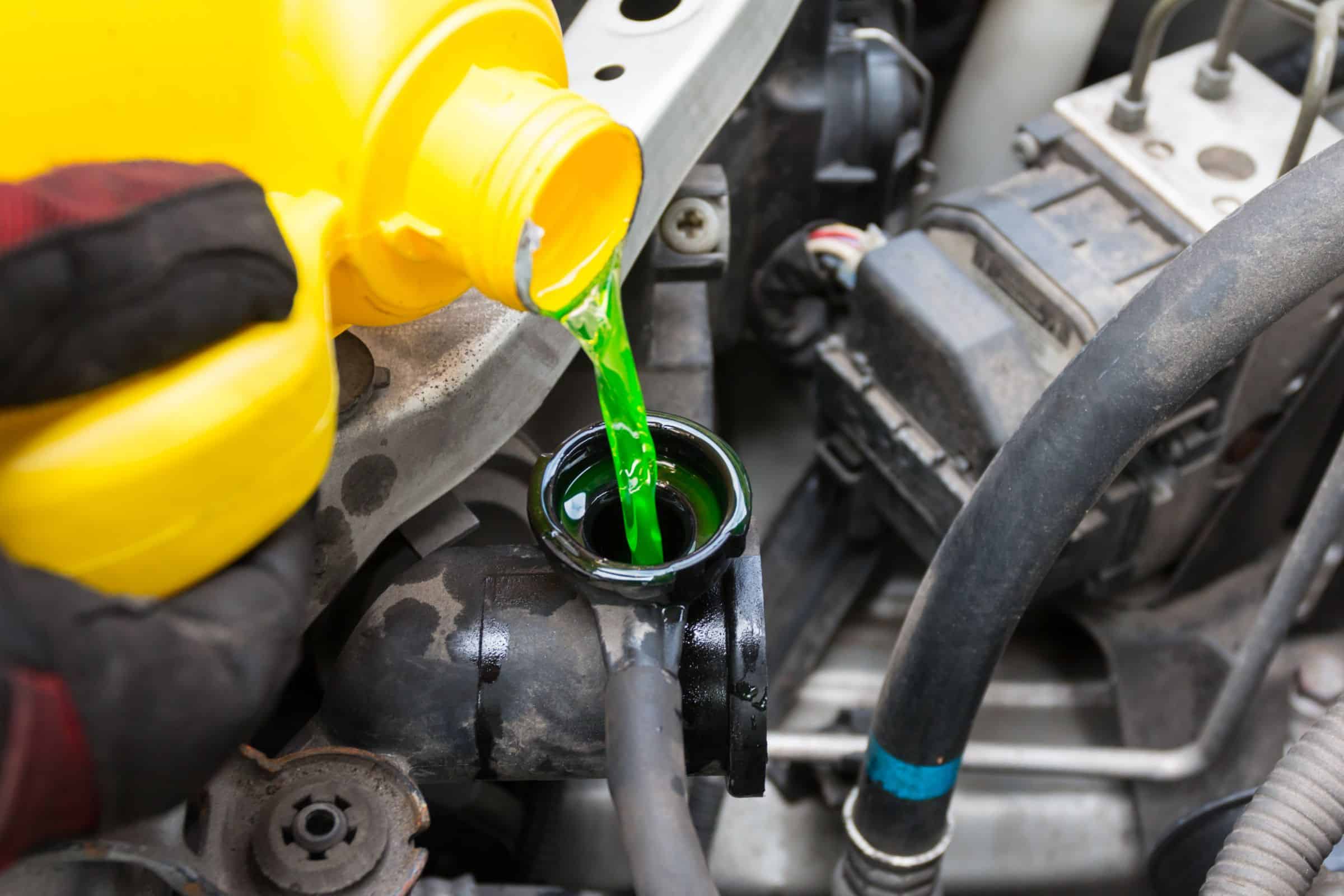
Check your owner’s manual. It will say what kind of coolant your car’s coolant system can handle. If you don’t have an owner’s manual, check online to see what type of coolant your vehicle needs.
Do not get the wrong kind of coolant for your car – you can’t “upgrade” an IAT system to one that uses OAT or HOAT. Before buying any coolant, you should verify that it will work for your vehicle. That’s because while there are three types of coolant, many manufacturers will utilize specialized blends for their particular vehicle.
The Three Best Brands
Best for IAT systems:
There’s a reason it’s the number one seller on Amazon. It’s an excellent price for a great product. They have both concentrate and premixed formulas available and fit’s just about every older vehicle. Zerex does offer antifreeze for newer cars as well. While we recommend different products for those systems, you’ll still be in great shape if you do end up using a Zerex coolant.
Best for OAT systems:
When you’re using this AC Delco formula with an OAT coolant system, you get a 5-year, 100,000-mile warranty. That’s because this coolant formula is specifically designed for newer coolant systems. It’s long-lasting antifreeze for a great price. This coolant DOES need mixed, which gives you greater adaptability for your region.
Best for HOAT systems:
It’s premixed and guaranteed for ten years or 300,000 miles. When it comes to long-lasting coolant, nothing beats this Dex-Cool formula. IF this coolant works for your car – don’t purchase anything else. It comes premixed with a 50/50 formula, so all you need to do is add it to your vehicle and head down the road!
Should I Get the Manufacturer Brand Coolant?
Antifreeze is nothing more than a blend of ethylene glycol, and as long as you get the right blend, it doesn’t matter who made it. The only difference between the coolant that your dealership is selling and the one you can find on Amazon is the price tag.
The only time you should be using a manufacturer brand coolant is if you need to because of a warranty. If that’s the case, be sure to keep your receipt, even if the dealership is the one doing the maintenance. Dealerships and warranty companies are notorious for trying to get out of the warranty – and receipts are needed to prove that you upheld your end of the contract.
What Color Coolant Do I Need?
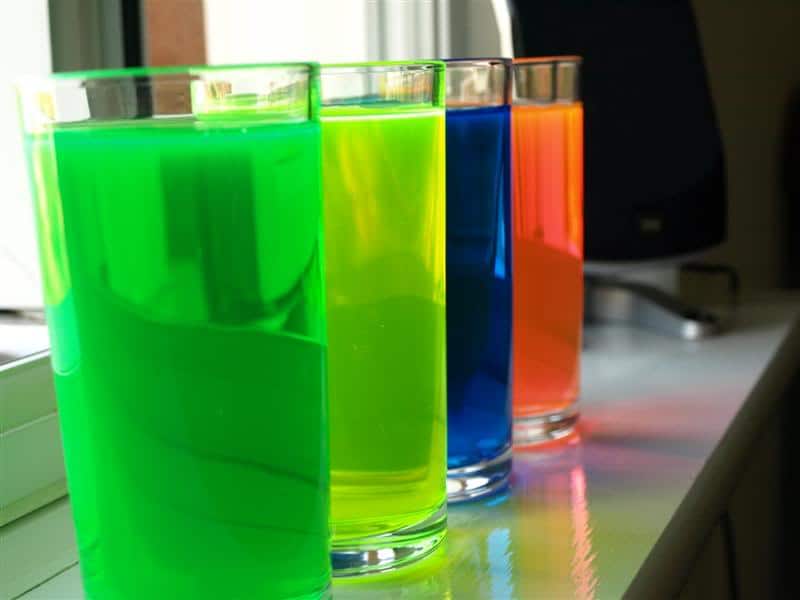
If you’ve never changed your coolant before, get the coolant recommended in the owner’s manual. While the colors used to mean quite a bit, in today’s world, the coolant’s color doesn’t really mean much.
That’s because the color of your coolant is primarily determined by the brand of coolant that you are using – not what chemicals are in the coolant. So, check your owner’s manual to see what kind of coolant your engine needs and go from there, just forget about the color!
What Type of Coolant Do I Need?
The easiest way to tell what kind of coolant your car needs is to check your owner’s manual. If you don’t have the owner’s manual, you can check online to see what kind of antifreeze that you need as a general rule older vehicles utilize IAT antifreeze. In contrast, newer ones will utilize either OAT or HOAT antifreeze.
When Should I Fill Up My Coolant?
While people talk about getting their oil changed all the time when was the last time you heard someone talking about replacing their coolant? Just like your car’s oil, your antifreeze breaks down and can wreak havoc on your vehicle unless you replace it.
Your vehicle’s owner’s manual lays out the intervals for replacing your coolant, but it is typically around 30,000 to 60,000 miles. However, these ranges can vary wildly from car to car, and some vehicles recommend that the coolant be changed every 150,000 miles. Of course, if you do end up losing coolant due to a leak, you’ll need to fill up your coolant then as well. This does not reset your service interval unless you are refilling the entire system.
Where Should I Store My Coolant?
Wherever you store your coolant – make sure that young kids and pets can’t get into it. That’s because antifreeze is extremely toxic.
In fact, antifreeze is so toxic that in 2005 the U.S. government mandated that the manufacturers add a bitterant to all antifreeze. Without that bitterant, antifreeze had a sweet taste – combined with the fact that it was highly toxic. This was a deadly combination.
Other than that, you need to make sure to store your coolant with its lid on tight, even if you aren’t worried about anyone or anything getting into it. That’s because if you don’t adequately seal your coolant, then you risk water or other foreign chemicals getting into your coolant.
When it comes to storage temperatures, you don’t need to worry about much. Typically, keeping antifreeze in your car or garage is perfectly acceptable. However, you do need to keep in mind that antifreeze concentrate has a much higher freezing point than mixed coolant.
Because of this, if you live in an area where it gets extremely cold during parts of the year, you need to make sure your antifreeze is in a place that it won’t freeze.
How Long Can I Store Coolant?

If you have antifreeze concentrate (not mixed), then it has an indefinite shelf life as long as it’s in its original sealed container. It does not matter if you have opened the antifreeze, as long you properly seal it before you store it.
If the seal is not airtight then it will attract water, which will ruin the antifreeze. If you have antifreeze in a container that is not airtight, you should discard it after a couple of days.
If you have premixed antifreeze, then it is only good for one to five years. The manufacturer prints this on the packaging, so you know how long you can store it for.
What Does It Mean if I Keep Running Out of Coolant?
Your cooling system is a sealed system – which means that you shouldn’t ever be running out of coolant. If you find that your coolant levels keep dropping, that means one of two things.
The first option is that it is leaking outside of your engine. This should be fairly easy to spot – since you will have a leak underneath your vehicle.
Of course, if you are losing coolant and don’t see an external leak, it means it’s going into the engine. If you have an internal leak, you will typically see it in your exhaust smoke. If your engine is burning coolant, then your exhaust smoke will be white, no matter your coolant’s color!
Your engine might also be smoking – and this smoke will be white as well. The most common way that your engine burns coolant is a blown head gasket. But to find out where your coolant leak is, you’ll probably need to take it to a mechanic.
What Makes a Good Coolant?
Good coolant is free of impurities. Anything in your coolant will affect the way that it cools your engine. Something as simple as water can cause the antifreeze to break down before it ever makes it to your car.
Bad coolant will either cause your car’s cooling system to corrode or overheat. Either way, you’ll find yourself with problems that you wouldn’t have if you used quality antifreeze.
How Do I Fill Up My Coolant?
The first thing you need to check before adding any coolant to your car is the type of coolant you got. Did you buy a premixed antifreeze, or do you need to mix it yourself? If you purchased a premixed coolant and matches what’s already in your vehicle, topping off your coolant is easy.
All you’ll need to do is pop off the cap from the coolant reservoir’s top and add coolant until it reaches the fill line. If it’s not premixed, add distilled water until it reaches a 50/50 or 60/40 ratio (see below on how to determine what ratio you need). Once mixed, you can add coolant until it reaches the fill line.
If you’re not just topping off your fluids, the process is a little different. That’s because you need to make sure that you’re getting all of the air pockets out of your cooling system. You should fill your radiator and engine separately from your coolant reservoir, if possible.
When filling these ports, make sure your coolant reservoir’s cap is off. The air needs somewhere to escape. Some engines will have you fill the entire system from the reservoir and have a bleeder valve to let the air out somewhere in the system.
Other engines will require you to work the air pockets out of the hoses as you fill-up the reservoir. No matter how you do it, you need to get the air pockets out, or your engine will end up overheating.
What Should I Mix My Coolant With?

When mixing coolant, you should always use distilled water. Do not use regular tap water or any other form of filtered water. That’s because the chemicals that are in your water (even filtered water!) can damage your car’s cooling system.
As your car sits, the chemicals in your water will cause corrosion. This corrosion will wear out seals and gaskets, leading to a vehicle that needs repairs.
How Much Water Should I Add to My Coolant?
Finding the perfect antifreeze to water ratio for your car primarily depends on where you live. No matter how warm your climate you want at least a 10/90 ratio (10 percent antifreeze, 90 percent water).
However, this mixture has a freezing point of 26 degrees Fahrenheit – so your car is in an environment that gets that cold it’s better to have a different ratio. Below is a chart breaking down the freezing point of the antifreeze mixtures.
When in doubt play it safe. Don’t let your coolant freeze, or you’re going to need to replace your entire cooling system.
You should know that the less antifreeze you use, the more effective your cooling system will be at cooling your engine.
| Water to Coolant Ratio | Freezing Temperature |
| 90% water 10% coolant | 26° Fahrenheit |
| 80% water 20% coolant | 18° Fahrenheit |
| 70% water 30% coolant | 7° Fahrenheit |
| 60% water 40% coolant | -10° Fahrenheit |
| 50% water 50% coolant | -34° Fahrenheit |
| 40% water 60% coolant | -63° Fahrenheit |
What Will Happen if I Don’t Mix My Coolant?
You might think that since a stronger coolant to water mixture lowers the freezing point of the mix -that adding pure antifreeze is more effective than a mixed blend. This couldn’t be more wrong.
While it will be harder to freeze than a pure 50/50 mix– it won’t be able to cool your engine effectively. Furthermore, if you mix your antifreeze at a 40/60 ratio (40 percent water to 60 percent antifreeze), you’ll get the lowest freezing point. Interestingly enough, if you run straight antifreeze, you get a freezing point significantly higher than if you mix it.
If you are running an engine with pure antifreeze, you need to change it immediately. An engine running pure antifreeze will lose about 35 percent of its cooling capability compared to an engine running a 50/50 mix.
A hotter engine will wear out quicker – leading to more repairs and more headaches for you!
What to Do If You Accidentally Mix Coolants
Mixing coolants creates a massive headache. That’s because, in order to fix it, you need to flush your system. That means you have to drain all of the coolant out of your cooling system and replace it with new coolant.
However, it is essential to get all the mixed coolant out of your system before adding the new coolant. To do this, you need to run new coolant through your entire system a couple of times – and drain and dispose of it each time.
Many mechanics will use water when completing the subsequent flushes to save a little money, but you will have a little extra water in your cooling system when you do this. That means when you add the properly mixed coolant to water mixture – you’ll end up with coolant that is a little too diluted.
While this doesn’t have significant impacts in most areas of the world, if you live somewhere that gets extremely cold, this could be disastrous.
What Will Happen If You Mix Coolants

Each type of coolant has its own type of ethylene-glycol components – mixing different coolants will lead to a system that doesn’t cool properly. This does not mean that you can’t mix different BRANDS of coolant; it means you can’t mix different KINDS of coolant.
When it comes to brands – everything is the same as long as the manufacturer ensures that they don’t add any impurities to the coolant. So, pick from one of our top-rated selections, and you can’t go wrong!
What Does It Mean If There Is Other Stuff in My Coolant?
Sometimes you will check your coolant only to find that there is some stuff in there that shouldn’t be. The most common thing you will find in your coolant is rust.
If there is rust in your coolant system, then it’s already too late. You’ll need to find the rusted component and replace it. And the scary part is that it means your coolant already deteriorated and you probably don’t have just one component that you need to replace.
If you find that you have oil or other engine fluids in your coolant that you have a seal that has given out.
No matter what you find in your coolant, you’ll need to repair the broken- or worn-down components and then flush your entire cooling system. It might be a headache, but it’s better than your car breaking down on the side of the road!
Frequently Asked Questions:
What Kind of Coolant Does My Car Use?
The easiest way to find this information is to check your owner’s manual. As long as you haven’t incorrectly filled your cooling system in the past, it will let you know what kind of coolant your car uses if you don’t have your car’s owner’s manual check to see if you can’t find one online.
Can I Just Add Coolant to My Car?
NO! You need to mix your coolant with water before adding it to your car. You don’t need to drain your existing coolant if you’re just topping off fluids, but your coolant does need to be mixed. Usually, these mixtures are a 50/50 water to coolant ratio – although you should always check with your particular brand of coolant.
What Happens When You Run Out of Coolant?
If you run your car without coolant, it will overheat. When your engine overheats, it will shut off before causing any significant damage – as long as your car’s sensors are working correctly. Your engine will need to cool down before it starts again, this usually takes a few hours, even on a cool day.


